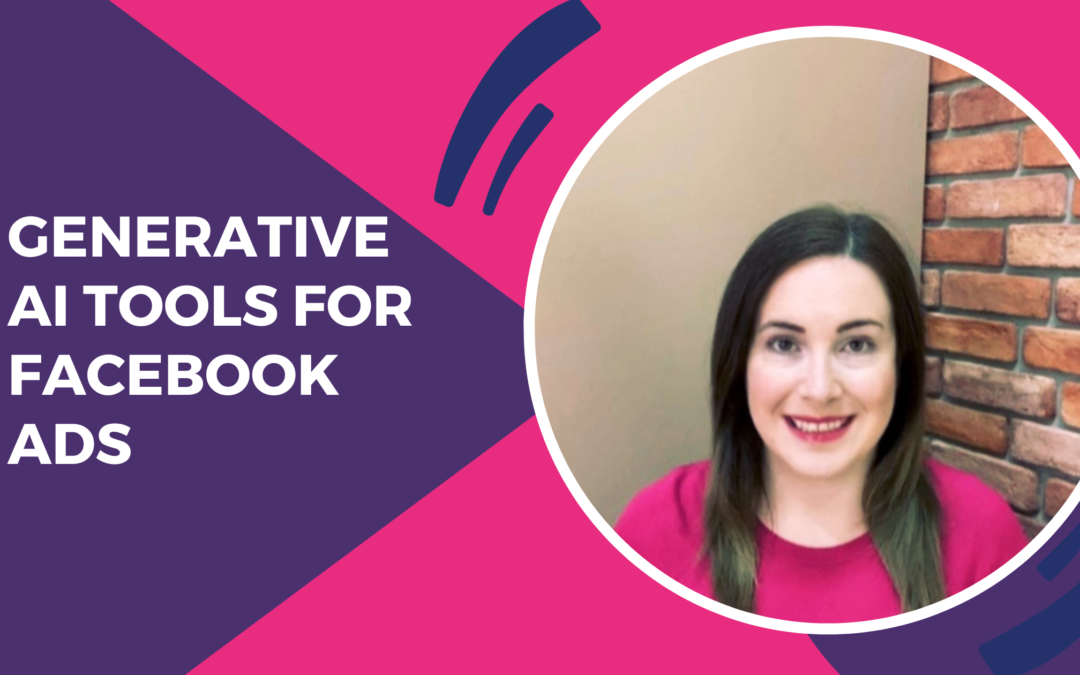
by NextGen | Jan 15, 2024 | Digital Marketing Tools, Facebook Ads
Last October, Facebook announced the first three generative AI-powered features that will become available to advertisers in the Meta Ads Manager in 2024. I am very happy to see that Facebook has finally started to embrace generative AI and after almost a year after it went mainstream.
Those three features are expected to help advertisers maximize productivity when developing creatives and improve ad performance, and here they are.
Background Generator
Advertisers can use this feature to create multiple backgrounds for product images and adjust the image backgrounds for different audiences.
Image Expansion
This feature allows advertisers to seamlessly resize images using generative AI. Nowadays we have to crop down images in order to have them fit different aspect ratios, with this new image expansion feature we can expand images instead of cropping them and the extra space will be populated by AI generated content.
Text Variations
This feature can be used to generate multiple versions of the ad text. Rephrasing tools are not anything innovative but the Facebook text variations feature promises to generate text that highlights the selling points of products/services.
Here you can learn more about those new and exciting generative AI options for Facebook ads.
Thanks for reading!
Aneta
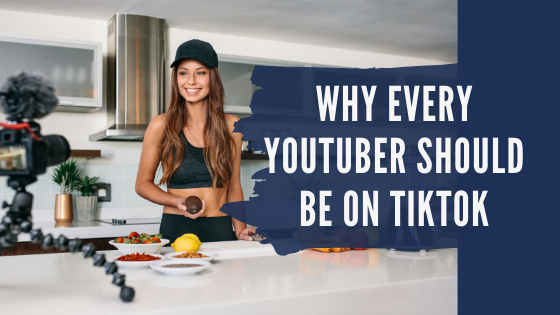
by NextGen | May 24, 2020 | Social Media Marketing
In this blog post I explain why every YouTuber should be on TikTok. I hope this content is useful for all YouTubers and brands who are interested in developing a presence on TikTok.
Misconceptions About You TikTok
Let’s first talk about some common misconceptions about TikTok. It is really sad that those misconceptions are circulating the internet and are deterring people from joining TikTok, even thought TikTok is an amazing platform with lots of opportunity for everyone.
TikTok is just a lip-syncing app
The most common misconception about TikTok is that TikTok is a lip-syncing app. This is totally not true today. It is really annoying that so many people still believe that TikTok is a lip-syncing app. I think this misconception originates from the fact that TikTok started as a lip-syncing app a few years ago and then it was known as Musical.ly.
However, ByteDance bought Musical.ly. and turned it into TikTok in 2017. In recent years TikTok has grown to become much more than a lip-syncing app. If you log-in TikTok and use it for a few minutes you will realize that there is a wide variety of content on the platform. The lip-syncing videos are definitely not the majority of videos on TikTok today.
TikTok is not a serious platform
Another common misconception about TikTok is that TikTok is not a serious platform. Some people say that all TikTok videos are just jokes or teenagers fooling around. While many videos on TikTok are funny and light-hearted, there are also many serious creators and serious brands who are doing very well on the platform with serious content.
On example is Dr. Julie Smith, she is a psychologist and mental health expert. So, obviously she creates very serious content. She has over 700k followers!
Another example is the account of PD Marketing. They are a marketing agency that creates videos about marketing on Tiktok. They have over 400k followers!
Therefore, if you are a serious brand or a serious content creator you should dismiss TikTok as a joke.
TikTok is just for kids
Another common misconception about TikTok is that TikTok is only for kids. It is true that the audience on TikTok is a little bit younger than the audience on other popular social media platforms. However it is not just kids on TikTok! Based on data released directly from TikTok, about 26% of the users on the platform are between the ages of 25-44. This doesn’t sound too young to me! There is almost a billion people on TikTok and many of them are in their 30s or 40s.
TikTok will eventually shut-down like Vine
And the last thing that I want to mention in this blog post is not really a misconception but a rumor. There is a rumor that has been circulating online that TikTok might eventually shut down. Some people think that TikTok will disappear similarly to how Vine disappeared. This makes some content creators and brands doubt whether they should join TikTok. Why go through the trouble of creating good content for TikTok if it is going to disappear in a couple of years? However, I completely disagree with that attitude!
First of all, we do not know for sure if TikTok will disappear in near future. I personally do not think it will disappear. Even if it does disappear, it is not a waste of time to join TikTok today. It is worth making an effort to create an audience on TikTok because you can move that audience to YouTube or other social media platforms.
Why Every YouTuber Should Be on TikTok
I understand that every content creator and every brand wants to have presence on multiple social media platforms. Successful YouTubers want to develop a presence on other platforms and they normally choose Instagram as their secondary platform. I am really surprised by this. Why Instagram? TikTok should be the secondary platform for YouTubers not Instagram!
TikTok and YouTube are both video platforms
I have watched many videos of business coaches on YouTube. Most of them have very helpful business channels on YouTube. Towards the end of their videos they ask you to follow them on Instagram. Then you visit their profile on Instagram and you see the business coach on the beach playing volleyball and drinking Piña-Coladas. That doesn’t make sense!
People should have a consistent presence across all social media platforms! If you are a business coach on YouTube, your profile on Instagram should also be professional. But, this is hard to achieve for YouTubers on Instagram because Instagram is a platform that is focused on pictures, not videos.
Therefore, the first reason why every YouTubers should be on TikTok is because TikTok and YouTube are the only two major social media platforms that are focused on video. That means that you can use your YouTube content and re-purpose it for TikTok! This is a lot easier to do than creating new pictures for Instagram. I re-purpose my YouTuber videos for TikTok all the time and it takes me only a few minutes per day to do this. Therefore, I think that TikTok is the easiest secondary platform to develop a presence on if you are a YouTuber.
It is easier to grow an audience on TikTok
Another reason why I think every YouTuber should be on TikTok is because I think it is a lot easier to develop an audience on TikTok than YouTube. TikTok is a new platform, it is not as saturated. Therefore, you can develop your audience on TikTok and then hopefully some of your followers on TikTok will also subscribe to your channel on YouTube.
In my example, I uploaded my first YouTube video on March 10th and I started my TikTok account on the April 8th. Therefore I started YouTube and then after a month I started TikTok. Today is the 24th of May and by today I have 133 subscribers on YouTube and 530 followers on TikTok. So, for me TikTok grew 3-4 times faster than YouTube!
How I Use TikTok
I started my YouTube channel earlier this year because I wanted to share my experience in digital marketing with other entrepreneurs, marketers and online personalities out there. But, my channel didn’t really grow much in the first month. Then, in early April I decided to join TikTok. By that point I already had many videos that I had recorded for YouTube that I could share on TikTok too and I saw TikTok as a good secondary platform to help me grow my YouTube channel.
I use the same footage for TikTok and YouTube. I record videos with the primary intention to share them on YouTube, therefore I need to make few adjustments to them before I can publish them on TikTok.
Shorter duration
The first adjustment that I need to make is to shorten the videos because on TikTok each video can be up to 59 seconds long. I one video weekly video for YouTube and each video is about 10 minutes long. I take that weekly YouTube video and cut out 7 one minute segments to post on TikTok that week. Then I post one short video on TikTok each day.
Horizontal orientation
The second adjustment that I need to worry about when I post YouTube videos on TikTok is the fact that on YouTube the videos are horizontal and on TikTok the videos are vertical. That means that when you take a YouTube video and publish it on TikTok you will get a big black box on top of the video and below the video. You need to put something in those black boxes in order to make the video look better on TikTok.
In the top black box I normally put the title of the video. While in the bottom black box I normally add a sticker. However, the bottom black box is not that much of a problem because all the hashtags and the captions that you use for the videos on TikTok will appear in the bottom black box. Therefore, half of the bottom black box will be covered by those items.
Music
The last adjustment that I make to my videos in order to make them more fun and interesting for people on TikTok is to add music to them. TikTok has a very large music library, but I there are a few ambient songs that I like and use a lot for my TikTok videos.
Thank you for reading this blog post about why every YouTuber should be on TikTok! I have also created a video on this topic. Click here to watch the video on YouTube. Watch the video for more detail about this topic. If you are completely new to TikTok and would like to learn more about this platform click here.

by NextGen | May 17, 2020 | Digital Marketing
In this blog post I will share with you what I love and hate about marketing. I have over 10 years of work experience in the field of marketing. This field, like any other fields, has both good and bad sides. I hope that the information that I will share in this blog post will be very useful for people interested in marketing careers and entrepreneurs who are considering doing marketing for their own business instead of hiring a marketing agency.
Why Marketing Matters
So why does marketing matter anyway?
The first reason why marketing matters is because in today’s world you cannot have a successful business without good marketing. Even if you have amazing products, unless you also do really good marketing campaigns nobody will find out about your products and buy them. Also, there are many examples of mediocre products that have become very popular because they have been marketed very well. Therefore marketing is the key to business success.
The second reason why marketing maters is because the marketing function is the heartbeat of every modern business. The most common business functions are: finance, strategy, operations, human resources, product development etc. However, modern businesses revolve around the marketing function because the marketing function is the closest to the consumer.
Marketers spend a lot of time trying to understand the target market of the company, and what people in the target market need and want. Then marketers share that knowledge with the product development team that works on creating products, the finance team that works on pricing products, the strategy team that works on creating the strategy for the business, etc. Therefore marketing is the most central business function.
What I Love About Marketing
1. Marketing Requires Both Creative And Analytical Skills
The first thing that I love about marketing is the fact that it requires both creative and analytical skills. In order to be a good marketer you need to create engaging content for your audience. Also, you need to understand the numbers and why some campaigns did better than others. So, the thing that I love the most about marketing is that marketers get to work on both creative stuff and analytics. Not many other business fields require both of those skills.
2. Marketing Is A Very Dynamic Field
The second thing that I love about marketing is the fact that it is a very dynamic and ever changing field. So, let me give you an example. When I was in college I had a cell phone with buttons on it, it didn’t even have a touch screen! I was one of the few people in my class who had a cell phone back then. And, I graduated from college in 2006 which is not that long ago, right?
When I was learning marketing in college mobile marketing didn’t even exist. Today mobile marketing is everywhere and it is very important. You cannot be a successful marketer today without doing mobile marketing. Over the 15 years since I graduated college marketing has changed so dramatically while all other business functions (finance, human resources, etc.) have largely stayed the same. I am really excited to see how marketing will evolve in the future.
3 Marketing Is A Very Broad Field
The third thing that I love about marketing is the fact that it is a very broad field with many different areas. First you have the divide between digital marketing and traditional marketing. Then within digital marketing you have many different channels, such as social, email, SEO etc. Then there is content marketing which is about developing engaging content. Influencer marketing which is about which is about being an influencer or working with influencers. Affiliate marketing which is about developing a network of affiliates for your brand. There are so many other areas within marketing. It is a lot of fun being a marketer because during your career you can work in many different areas while still staying within the same field of marketing.
4. Marketing Is Global
The forth thing that I love about marketing is the fact that it is a very global profession. I have worked with people from all over the world during my career as a marketer. In the last three years since I have been running my digital marketing agency I have worked with clients from 30 different countries. I love being exposed to such diversity and learning about our world by working with people for different backgrounds and cultures. This is especially important for me because I come from a very small country. My country has only two million people, which is roughly one quarter of New York City. So, you can fit four of my countries in NYC! I love the fact that as a digital marketer the world is my market and I am not limited to just working in my local community.
5. Marketing Is A Growing Field
The fifth thing that I love about marketing is the fact that it is a growing field with many career opportunities. The fast growth of the marketing field has created a big shortage of people with the right marketing skills. Therefore, you can always find many career opportunities in marketing if this is what you want to pursue. However, the key is to always stay up to date with changes in the marketing world and to constantly upgrade your skill set as the field changes.
What I Hate About Marketing
1. Marketing in on 24/7
The first thing that I hate about marketing is the fact that marketing in on 24/7, so you never get a break if you are a marketer because the internet never sleeps. This can be very draining and challenging for some people. Especially if you are one of those people who wants to disconnect and forget about work for a while.
As a marketer you always have to be connected and monitor what is going on. If there is something interesting going on you have to respond right away or otherwise it will be too late. Therefore, if you are a marketer you can travel a lot because all your work can be done on a computer, but you have to make sure you always have good access to the internet.
2. It Is Hard To Keep Up With Marketing
The second thing that I don’t like about marketing is the fact that it is very hard to keep up with all the new trends, all the new technology and all the new best practices in the field. It is really hard to always be in the know when it comes to marketing.
For example the Google Analytics Certificate, which is a very popular certificate in the marketing field, is only valid for two years. That means that you have to re-take the test and get re-certified every two years. This is the case with many other certificates that are popular in the marketing field. Therefore, if you are a marketer you have to always keep up with changes in the field, which can be challenging to do and requires a lot of effort.
3. Data Overload In Marketing
The third thing that I don’t like about marketing is the data overload. There is so much data available to marketers today that it is overwhelming. We have data about the customers, demographics data, purchasing behavior data, data about social media, data about website visits, etc. When you open Google Analytics or Facebook Insights you see so much data there that your head starts to hurt! So, we are bombarded with so much data every day and we have to determine which data points mean something and which data points are just noise. This can be very confusing at times and it is something that I don’t enjoy about being a marketer.
4. It Is Hard To Measure The Offline Impact Of Digital Marketing
The forth thing that I don’t like about marketing is the fact that it is very hard to measure the offline impact of digital marketing. What does that mean? Well, me and my team promote our clients on the internet and many people find out about our clients through the activities that we do online. However, it is really hard to attribute any offline sales to the online marketing efforts of me and my team. Many times we don’t get any credit for offline sales that have happened as a result of our efforts.
I hope you enjoyed reading this blog post and that you found it helpful. I have also created a YouTube video about what I love and hate about marketing. Click here to watch the video.

by NextGen | May 10, 2020 | Uncategorized
In this blog post I will talk about the marketing tools that we use at my digital marketing agency. More specifically, I will talk about three categories of tools: tools for scheduling posts on social media, email marketing tools and content design tools. All of the tools discussed in this post offer free plans. So, you can use them for free, how exciting!
Tools For Scheduling Posts On Social Media
The first category of tools that I will cover in this blog post is tools for scheduling posts on social media. All marketers use scheduling tools because it is a lot easier to have all posts scheduled ahead of time instead of having to worry about publishing posts every day. Also, scheduling tools make management of multiple social accounts easier because you can connect several social media networks to a scheduling tool and publish the same post on multiple networks with just one click. This is a big time saver!
Buffer
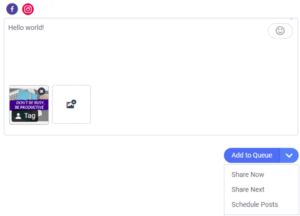 Here is a screenshot from my favorite scheduling tool, Buffer. All scheduling tools offer similar features, but I prefer Buffer because I like the look and feel of it.
Here is a screenshot from my favorite scheduling tool, Buffer. All scheduling tools offer similar features, but I prefer Buffer because I like the look and feel of it.
The first thing that you notice on this screen shot is a big text box. This is where you enter the text that you want to use for your post, including any links and hashtags. Under the text box there is a button with a plus sign on it. You can add a picture or a video to your post by clicking on this button.
Across the top you see the logos of Facebook and Instagram. This is where you can select the social media networks that you want the post to be published on. If you select both Facebook and Instagram the content will automatically be published on both networks. Isn’t that just so easy? In addition to Facebook and Instagram you can also connect Twitter, LinkedIn and Pinterest Boards to Buffer.
The last thing to note here is the “Add to Queue” button. Click on this button to select the time and date when the post will be published. You can select “Share Now” to publish the post immediately or “Schedule Post” to publish the post at a specific date and time in the future.
The free plan on Buffer includes 3 social accounts and 10 scheduled posts per month. That means you can connect 3 social media profiles and schedule 10 posts across those 3 profiles per month. The cheapest paid plan on Buffer costs $15 per month and for that price you can connect 8 social accounts and schedule 100 posts per month.
Hootsuite
Another very popular scheduling tool for social media is Hootsuite. Hootsuite has an important role in social media marketing because it was the first scheduling tool that became popular and widely used. Hootsuite is a little bit older than Buffer, it was launched in 2008 while Buffer was launched in 2010. I think the user interface of Hootsuite feels older and clunker.
However, you get more value with Hootsuite because it is a bit cheaper than Buffer. On Hootsuite you get 3 social accounts and 30 scheduled posts per month for free. While on Buffer you get only 10 scheduled posts per month for free. The cheapest paid plan on Hootsuite costs $19 and for that price you can connect 10 social media profiles and schedule unlimited number of posts per month, unlimited!
Tools For Email Marketing
The second category of marketing tools that I will cover in this blog post is email marketing tools. Email marketing is one of the most effective marketing channels today and it is a much older channel than social media. People started using email in the late 80s while Facebook was created in 2004. Since email is a very mature marketing channel there are a large number of email marketing tools that you can use to create nice looking emails and manage your contact list.
MailChimp
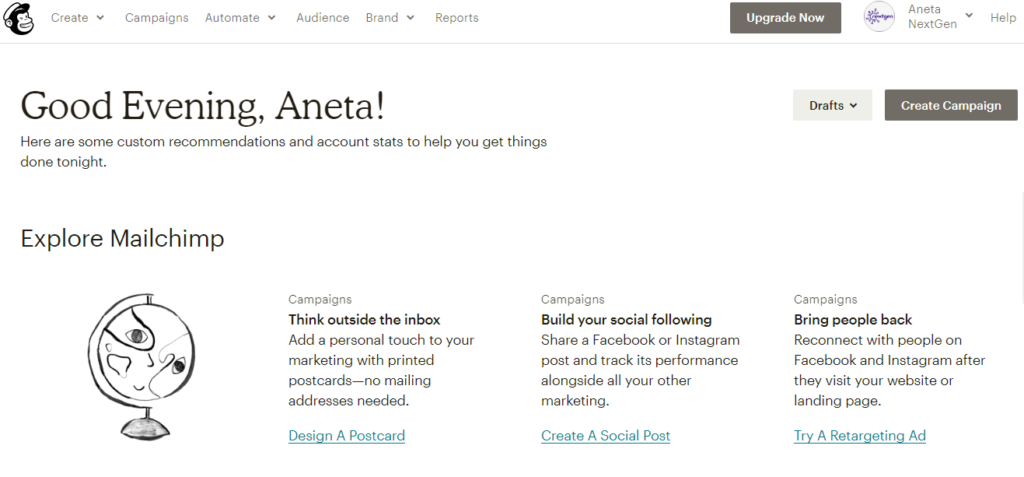 MailChimp is the most popular email marketing tool. It gained popularity over the years because it used to offer a very generous free plan. In recent years MailChimp has reduced the number of emails that you can send for free and the number of contacts that you can email for free. However I still think that MailChimp offers good value for free. In addition, MailChimp is very intuitive and easy to use. Therefore MailChimp is my favorite email marketing tool.
MailChimp is the most popular email marketing tool. It gained popularity over the years because it used to offer a very generous free plan. In recent years MailChimp has reduced the number of emails that you can send for free and the number of contacts that you can email for free. However I still think that MailChimp offers good value for free. In addition, MailChimp is very intuitive and easy to use. Therefore MailChimp is my favorite email marketing tool.
Please see above a screenshot from the MailChimp. This is what MailChimp looks like when you first log into it. As you can see the initial user dashboard is very simple.
Across the top you will notice a menu with several items. First there is the “Create” item that you can use to create things emails, ads, landing pages, sign-up forms and other things within MailChimp.
An important item in this menu is the “Audience” item where you will find your contact lists. Also, please note the “Reports” item where you will find stats, such as open rates and click through rates, for emails that you have sent in the past.
With the free plan on MailChimp you can have mailing lists with up to 2,000 contacts and you can send up to 10,000 emails per month. This free plan used to be more generous but in recent years MailChimp has lowered the limits for contacts and emails that are part of the free plan. However, I think that MailChimp still offers a very generous free plan. While the paid plans at MailChimp start at $9.
Klaviyo
Another email marketing tool that I would like to mention is Klaviyo. This is a tool has become very popular in recent months, especially for ecommerce brands because it offers very easy integrations with ecommerce platforms such as Shopify and WooCommerce. You can have up to 250 contacts and send up to 500 emails per month via Klaviyo.
And the last tool that I would like to mention in this blog post is AWebber. AWebber is well known tool for email automation because it has the best features and options for email automation. Currently AWebber does not offer a free plan, but they offer a free 30 month trial.
Marketing Tools For Content Design
The last category of marketing tools that I will cover in this blog post is tools for content design. In other words, tools that you can use to create beautiful pictures and engaging videos for your social media profiles.
Canva
I suppose you have all heard about Canva. Canva is by far the most popular tool for graphics design for social media. Canva offers many useful features for free. If you don’t have a Canva account already you should definitely create one today!
One of the best things about Canva is the fact that it has all the recommended dimensions for social media content so that you don’t have to worry about sizing. For example, do you know the optimal dimension for a YouTube thumbnail? I don’t. However, I can just go in Canva, select “YouTube” thumbnail and Canva will automatically create a blank YouTube thumbnail in the recommended size.
Another cool thing about Canva is that it has thousands of pre-made templates that you can adjust and use for your social media profiles. For example, on the left side of the graphics below you can see a mother’s day template that I found in Canva. You can use this well designed template and re-purpose it for something else by changing the colors, the text and the picture on it. I decided to turn this mother’s day template into a father’s day template. On the right side of the graphics below you can see the father’s day version of the template. It took me literally 2 minutes to turn the mother’s day template into a father’s day post on Canta.
 So, instead of creating graphics for social media from scratch many marketers use Canva to create beautiful graphics for free. The templates help us save time, but they also help us improve the visual appeal of the graphics. Even if I had all the time in the world I don’t think I would be able to put together such professionally looking and visually appealing graphics for social media if it wasn’t for Canva.
So, instead of creating graphics for social media from scratch many marketers use Canva to create beautiful graphics for free. The templates help us save time, but they also help us improve the visual appeal of the graphics. Even if I had all the time in the world I don’t think I would be able to put together such professionally looking and visually appealing graphics for social media if it wasn’t for Canva.
As I mentioned before, Canva offers many great features for free and most people who use Canva don’t pay for it. However, because I personally have a subscription to Canva. The subscription costs $13 per month. With the subscription I have access to more templates, more pictures and more storage space for my account. The subscription also allows me to share designs with my team using Canva’s team functionality.
Kapwing
Besides Canva, another tool that I would like to mention in this blog post is Kapwing. Kapwing is a great tool for video editing. I use Kapwing a lot for resizing videos especially resizing YouTube videos to use for IGTV on Instagram. With the free version of Kapwing you can resize videos that are up to 7 minutes long. This limit used to be 10 minutes, but unfortunately Kapwing recently decreased the limit for editing videos for free from 10 minutes to 7 minutes.
I hope you found this blog post helpful! I have also filmed a YouTube video on this topic for my YouTube Channel.
If you are interested to learn more about social media marketing you can also read the following two blog post that I have published recently: Posting Frequency Recommendations For Social Media, Social Media Strategy – My 3 Step Process.
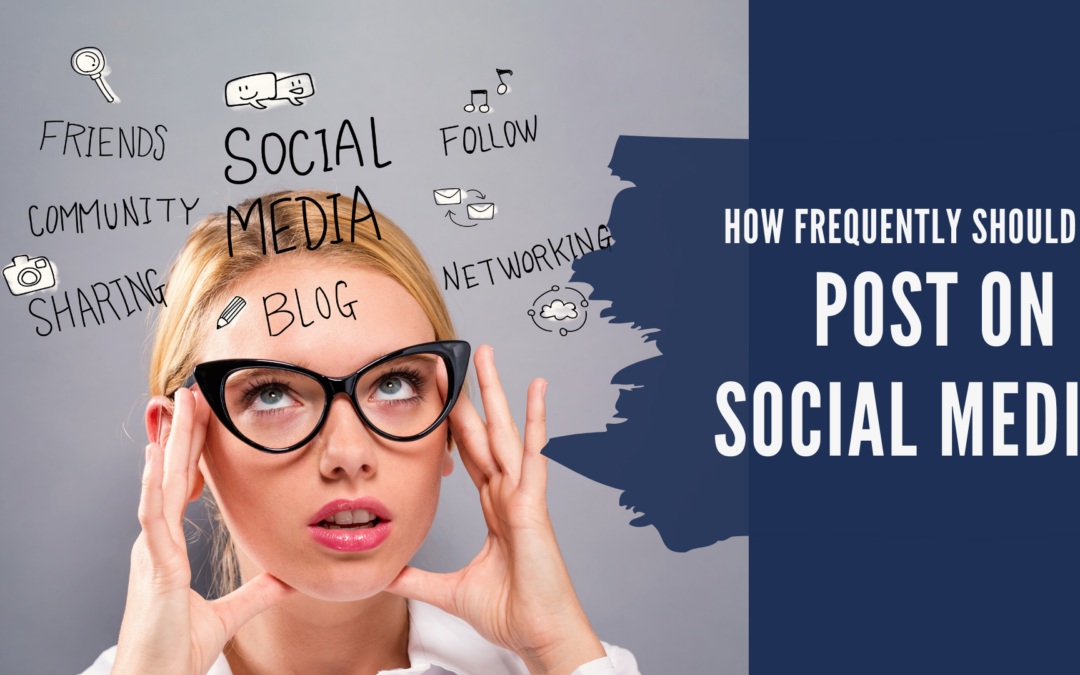
by NextGen | May 3, 2020 | Social Media Marketing
Most of us marketers understand the importance of posting frequency for achieving success on social media, however most of my clients seem totally clueless about this issue. To be honest with you, most of my clients had never even thought about the optimal posting frequencies for their brands before starting to work with me. I decided to write this blog post in order to create more awareness about the importance of posting frequency.
Why Posting Frequency Is Important?
Posting frequency is one of the trickiest decisions that you will have to make for your social media strategy. There are many factors that you need to evaluate carefully when making this decision. Also, you need to understand the significance of each factor for your brand and your audience. If you make the wrong decision about your posting frequency you will end up posting too frequently or too infrequently, and both of those scenarios can have very negative consequences for your business.
Posting too much, or too frequently can have the following negative effects on your social media presence:
- People will get annoyed by you and unfollow you.
- Your followers will feel overwhelmed with the amount of content that you produce.
- Social media networks will show your posts to a lower number of your followers because social media networks like to maintain a variety in user’s feed.
- Your profile will look like a content dump and therefore it will not be attractive to new potential followers.
Posting to infrequently can also have several negative effects on your social media presence:
- Your followers will forget about you if you don’t see any posts from you in a while.
- You will get labeled as “inconsistent”, which is one of the biggest sins on social media.
- Social media networks will show your posts to fewer people because they will think that you are not serious about growing your brand.
- Your profile will look abandoned and therefore it will not attract new followers.
5 Factors To Consider When Selecting Posting Frequency
1.The amount of time you have available to create good content consistently.
When debating the posting frequency for your brand the first thing that you need to ask yourself is how frequently you can create good quality content for each social media network and have the bandwidth to do that consistently.
For example, I decided that I have the time to do one good quality long video for YouTube per week and seven good quality short videos for TikTok per week (so that means one videos for TikTop every day). I made this decision taking into consideration the fact that I have about 5 hours per week available for making videos. I spent the rest of my time on marketing activities for my brand (which is very important) and on client work (which I really enjoy).
To be more efficient with your content you can post the same content across multiple platforms. You can post the same picture on both Instagram and Facebook, or post the same short video on both TikTok and Instagram. However, you need to adjust the content appropriately for each platform because the content requirements such as size, aspect ratio, orientation (horizontal or vertical) are different for every platform. YouTube videos are horizontal while TikTok and Instagram stories videos are vertical. Also, please remove any links form the photo captions on Instagram because it is not possible to link out of Instagram. It is a common mistake for marketers to copy over exactly the same caption, with links, from Facebook over to Instagram.
2. The Average Shelf Life Of Posts On Each Social Media Network
Tweets have very short shelf life, a tweet is considered “old” after only an hour or so. Therefore, some brands, for whom Twitter is an important network post “only” 100 times per day. While posts on LinkedIn and YouTube have a very long shelf life of a few days. Some YouTube videos are even considered “evergreen” and they keep getting views months or years after they have been posted. Therefore, when selecting the posting frequency you should consider the shelf life of posts on every network.
3. The Number Of Followers You Have On Each Network
The more followers you have on a network the safer it is to post more frequently. For the networks where you have less than 1,000 followers you should be very careful not to overwhelm your audience by posting too frequently.
4. The Average Age Of Your Followers
Younger people generally tend to spend more time on social media than older people. Therefore, if your target audience is mid-career professionals or older you should air on the side of caution and post less frequently.
5. Whether Your Brand Is a B2B Or a B2C Brand
B2B stands for business-to-business, while B2C stands for business-to-consumer. An example of a B2B brand is a furniture company that makes office furniture. While McDonalds is probably one of the best known B2C brands and they sell fast food directly to customers. B2B brands tend to post less frequently than B2C brands.
Recommended Posting Frequency For Each Network
Facebook
The recommended posting frequency for Facebook ranges from 3 posts per week to 1 post per day.
If you have less than 10,000 followers Facebook will split the daily reach of your posts between all posts that day. For example, if you normally get a daily reach of 400 and you post once per day that one posts will achieve a reach of 400. While, if you post two times per day each one of your two posts will achieve reach of 200. Therefore, it really does not make sense to post more than once per day on Facebook.
Hubspot performed research on this topic and analyzed 13,500 Facebook accounts of their customers. They found that pages with under 10,000 followers had 50% decrease in engagement when they posted more than once per day.
Instagram
Even though Instagram is owned by Facebook they are not as strict as Facebook about punishing brands that post more than once per day. Posting frequency on Instagram ranges between 1 to 3 posts per day. Where 1 or 2 posts per day is the recommended posting frequency.
LinkedIn
The posting frequency on LinkedIn ranges between 2 times per week to once per day. You should not post more than once per day on LinkedIn under any circumstances! Since LinkedIn is a professional network it is best to post during the workweek and avoid posting during the weekends. The recommended posting frequency for LinkedIn is between 2 and 3 times per week.
Pinterest & Twitter
If you create a lot of content for social media you should use Pinterest and Twitter as your outlet. The posting frequency for those two networks ranges from 3 to 30 posts per day. Yes, 30 posts per days! Where the recommended frequency for Pinterest is about 10 pins per day. While the recommended frequency fro Twitter is about 15 tweets per day. You should spread out the pins and tweets throughout the day.
I hope you found this blog post useful. I have also filmed a YouTube video on this topic, link to video.
Do you need help with social media marketing? We can help you! Get a quote here.





 Here is a screenshot from my favorite scheduling tool,
Here is a screenshot from my favorite scheduling tool,  MailChimp is the most popular email marketing tool. It gained popularity over the years because it used to offer a very generous free plan. In recent years MailChimp has reduced the number of emails that you can send for free and the number of contacts that you can email for free. However I still think that MailChimp offers good value for free. In addition, MailChimp is very intuitive and easy to use. Therefore MailChimp is my favorite email marketing tool.
MailChimp is the most popular email marketing tool. It gained popularity over the years because it used to offer a very generous free plan. In recent years MailChimp has reduced the number of emails that you can send for free and the number of contacts that you can email for free. However I still think that MailChimp offers good value for free. In addition, MailChimp is very intuitive and easy to use. Therefore MailChimp is my favorite email marketing tool. So, instead of creating graphics for social media from scratch many marketers use Canva to create beautiful graphics for free. The templates help us save time, but they also help us improve the visual appeal of the graphics. Even if I had all the time in the world I don’t think I would be able to put together such professionally looking and visually appealing graphics for social media if it wasn’t for Canva.
So, instead of creating graphics for social media from scratch many marketers use Canva to create beautiful graphics for free. The templates help us save time, but they also help us improve the visual appeal of the graphics. Even if I had all the time in the world I don’t think I would be able to put together such professionally looking and visually appealing graphics for social media if it wasn’t for Canva.
